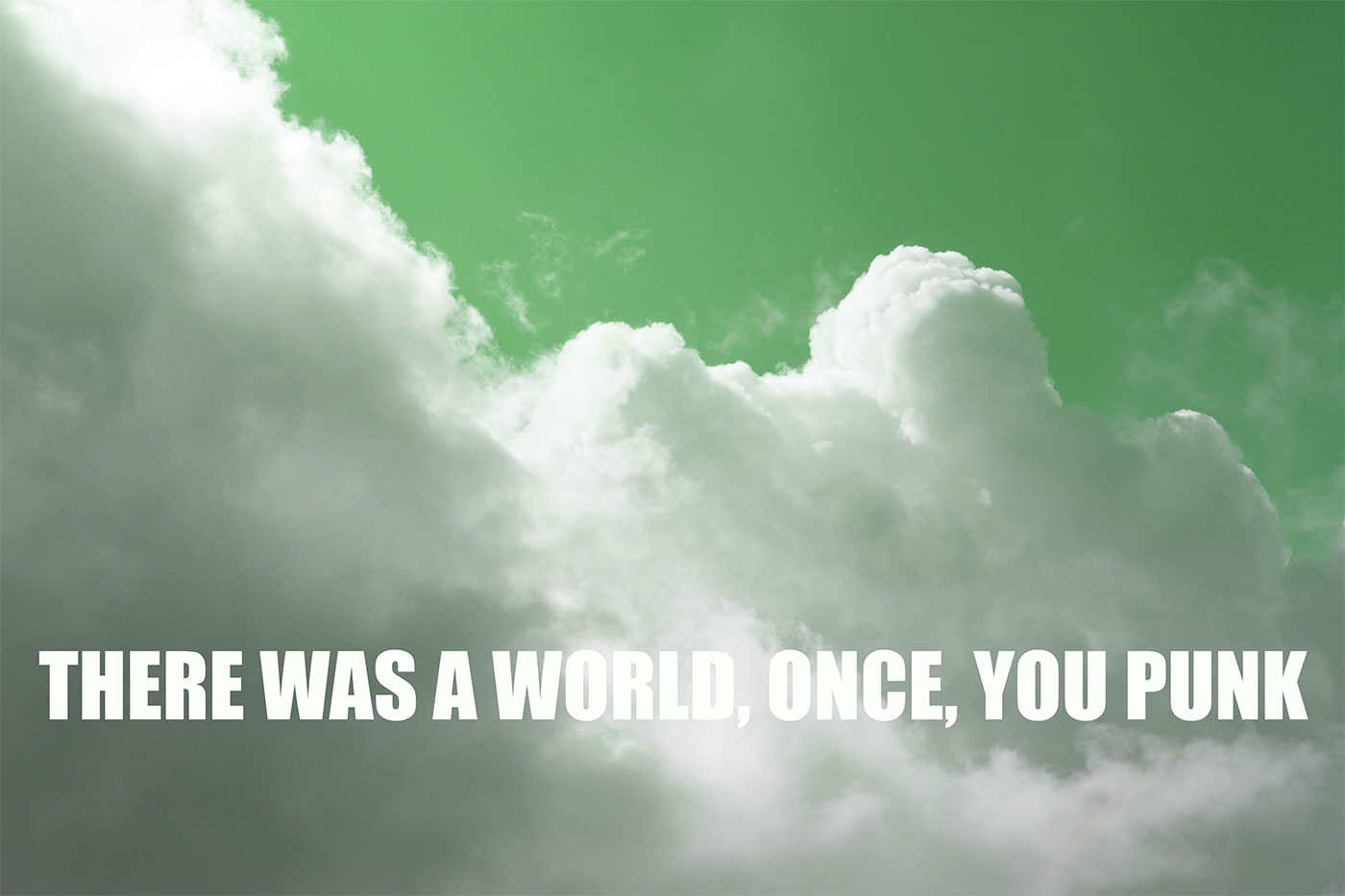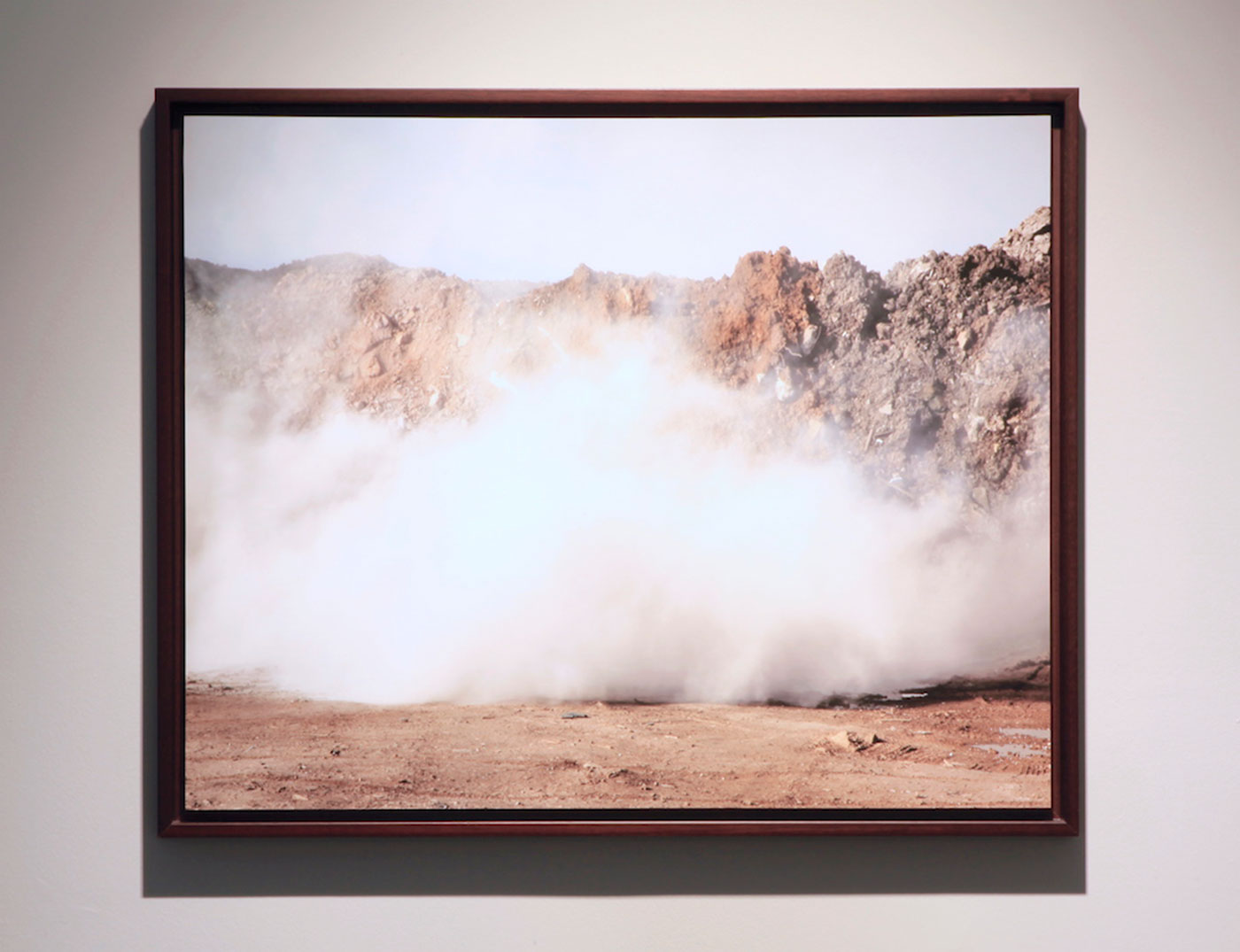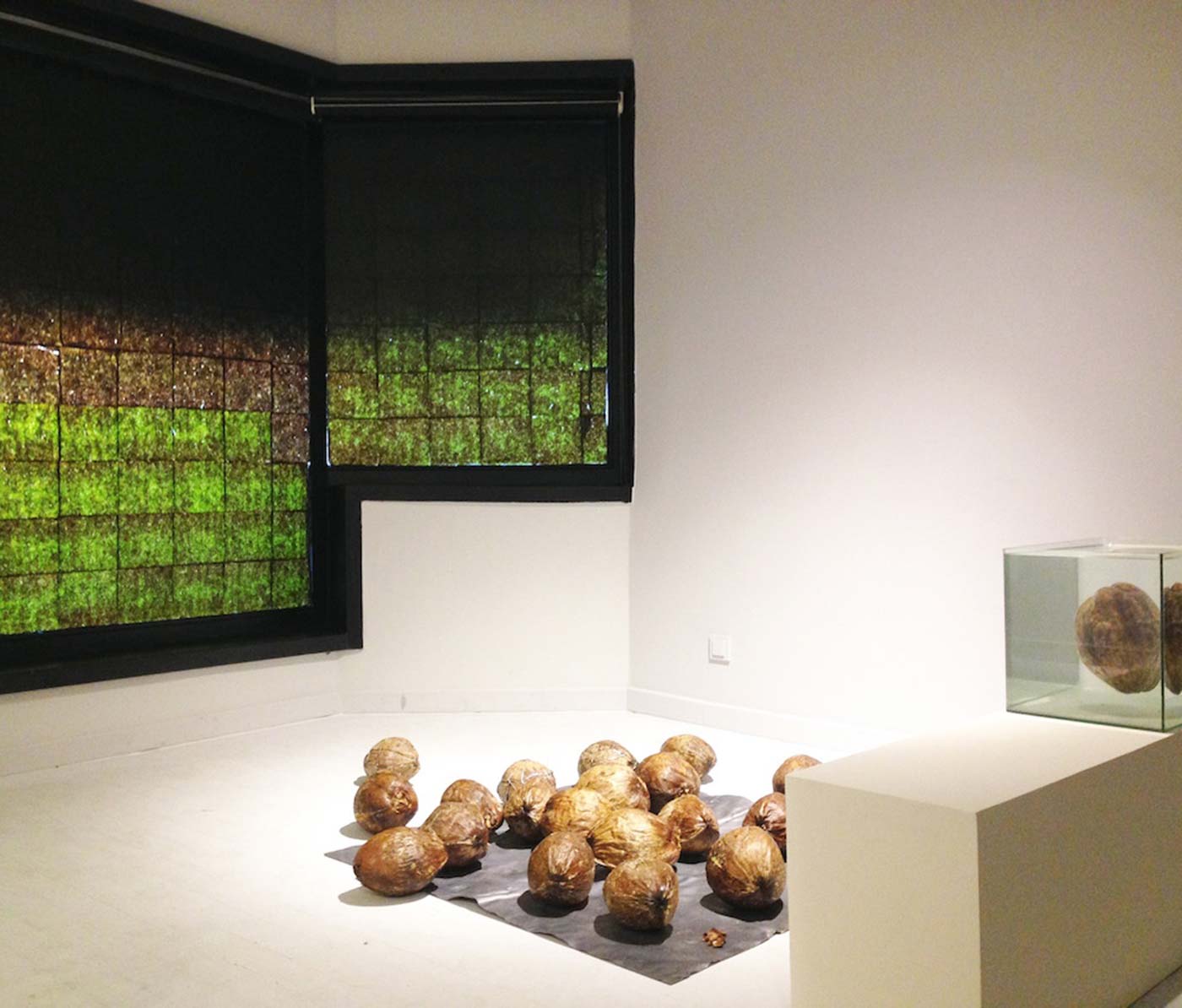
Istanbul based gallery Blok Art Space is hosting the exhibition ‘There was a world, once, you punk’ from 18 November 2016 – 6 January 2017. I talked to the show’s curators Anna-Lena Werner, Anneli Botz and Lars Bjerre, who form the Berlin-based curatorial collective Point Project about poetic art, the relation between human, nature and technology and why it is important to make an exhibition in Istanbul at the moment.
Can you tell us a bit about your curatorial collective Point Project?
PP: Anneli and Anna-Lena are art historians, Lars is an artist. We all share interests in both aesthetic and socio-political themes; especially when these meet common ground. The three of us like to work with poetic forms of art that require a spatial, sometimes immersive experience. Our last project took place in an old GDR building in Berlin, which used to be a former Czech cultural centre that houses a beautiful, wooden cinema. Six international artists reflected on the creation of illusionary spaces within the somewhat sterile communist architecture, paying reference to immersive and conceptual approaches.
How did you come up with the title ‘There was a world, once, you punk’?
PP: Lars branded our working title as ‘NO GREEN.’ We discussed how the deficiency of all botany in urban surroundings affects global cities, turning them slowly into cityscapes that we previously mainly knew through watching dystopic movies, such as ‘Soylent Green.’ The movie describes a world in which there is no more nature. Instead nature has become a myth, a legend to the young. In the movie’s world, when people reach a certain age, they go to a place to die. It’s a plain room, turned into a cinema that shows images of nature and animals – a last view on the beauty of our planet. That’s why we turned this particular quote from the movie into our exhibition title. It resembles a futuristic fear we all have in regards to what is happening to our planet.

One of the themes of your exhibition is the political symbolism of nature. Could you elaborate on this theme and explain which artists in the exhibition address this topic in their works and how?
PP: Nature is directly connected to freedom. As humans we should be entitled to the access of nature within our close surroundings. Nature is life, it is communication in terms of a gathering point, it is a prime form of aesthetics. The repression of nature is also an elimination of freedom and democracy. We think that a good relation with nature requires us, as humans, to accept that we cannot control everything despite the industrial thinking our modern world is driven by. Serkan Taycan’s photographs of new urban settlements in the outskirts of Istanbul show exactly how nature is often being subordinated to the power of man. In Lars’ painting this relation between human and nature is more symbolical, shown along dozens of watering pots locked to a structure so that nobody steals them. And in Dunja Herzog’s installation we are confronted with a new territory, a new natural habitat, claimed by seaweed sheets attached to the window. Florian Meisenberg’s work on the other hand focuses on artificial intelligence and how it is hardly in any emotional connection to our natural origin. AI – an innumerable amount of digital intelligence, detached from individual feelings.
Is there a specific work in the exhibition which gave you the initial idea for the exhibition or triggered your curatorial process?
PP: One of the first artists we picked for this show was Markus Hoffmann. His work focuses strongly on how nuclear power manifests itself in what he calls ‘containments’ – mushrooms or coconuts, for example, that are contaminated because they were or are still exposed to nuclear radiation. They are symbols of this radical change in nature, that we are currently witnessing. His combination of socio-political themes and an immersive and simultaneously minimalist aesthetic is coherent with the overall philosophy of our concept.
What do you feel people can get out of your exhibition? Is there a message you would like to convey to the visitors?
PP: We would hope that visitors reconsider the relation they have with nature, and therefore also reconsider the relation they have with each other – being a part of nature. It’s about becoming aware of the natural heritage. While Lydia Ourahmane’s and Markus Hoffmann’s works discuss the extraction of resources, such as oil and uranium, Andreas Greiner’s work focuses on animal rights in terms of how unequally we treat other lifeforms to ours, even if it is only a fly. Every work has its own story to tell, but they all observe the changes that are happening. In uttering their opinion we want to point that we all have a right to advocate the preservation of our own planet and how important it is to stay in constant discourse.

Right: Markus Hoffmann, Bikini Atoll Containment, 2016, Coconuts from the Marshall Islands, lead plate, salt water, glass cube
Do you feel it is important to organise an international exhibition in Istanbul at the moment?
PP: Yes, it seems like exactly the right time to do this. We find artistic reflection on current social issues and moods more sensitive, and certainly less propagandistic than many other sources available to the public. Sometimes images are stronger than words. Istanbul has been a thriving creative center in the past years and this is what we hope to support.
POINT PROJECT is a Berlin-based curatorial collective, joining poetic strategies, immersive aesthetics, and conceptual ideas to reflect on social and aesthetic issues through art and debate. The collective is initiated and run by Anna-Lena Werner, Anneli Botz, and Lars Bjerre.

